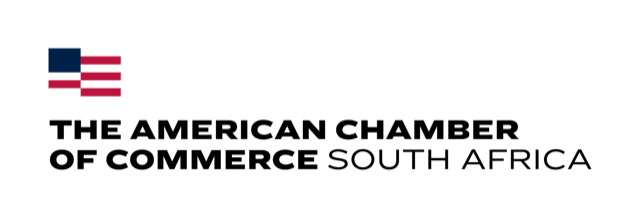SA’s G20 gig: bigger than 2010 and Zakumi – don’t blow it!
By Ray Mahlaka
It’s like the 2010 Fifa World Cup all over again.
This is how some people have described the energy surrounding the official launch of South Africa’s Group of 20 (G20) presidency on Sunday, 1 December 2024.
It wouldn’t be a reach to liken the G20 presidency and its yearlong events planned in South Africa to the country’s successful hosting of the World Cup soccer tournament in 2010.
There are similarities at play.
Municipalities will again be forced to fix roads and street lights, clean the streets and upgrade infrastructure as G20 leaders, representing about 80% of the world’s economies, descend on South Africa, especially in Gauteng.
Joburg will have to get its act together and remedy its service delivery problems as it would be embarrassing for world leaders — including the US’s Joe Biden (although he’s warming the seat for Donald Trump), Ukraine’s Volodymyr Zelensky, Russia’s Vladimir Putin, China’s Xi Jinping, France’s Emmanuel Macron, Canada’s Justin Trudeau, and others — to experience the city’s perennial water cuts. Or maybe the city needs to be embarrassed on a global stage, and the penny will finally drop around good governance and service delivery.
The Fifa World Cup was a game-changer because it represented the most successful public infrastructure rollout post-apartheid.
National Treasury’s budget documents for February 2010 show that the government spent nearly R50-billion on stadiums, other World Cup-related infrastructure and promotional initiatives such as the Zakumi the Leopard mascot. This cost swelled from an initially projected R28-billion. National and local governments also pitched in by investing to improve transport and communications/digital infrastructure.
There were big projects such as the Gautrain and rapid bus transit systems in Johannesburg, Pretoria, Cape Town, Ekurhuleni and eThekwini, which were already planned before the World Cup but delivered just in time for the soccer tournament. South Africa’s digital infrastructure was also spruced up, which enabled the 2010 Fifa World Cup to be the first to be broadcast in high definition.
It took great coordination between the arms of government, including the police, tourism, public works, sport, municipalities and others, to pull off the soccer tournament. That coordination is no longer there as state capacity has weakened since 2010, as well as the government’s financial situation.
Hosting events around the G20 is estimated to cost R691-million (or even more), with South Africa’s government needing to secure private venues to host summits and engagement forums in Gauteng and other parts of the country. The government cannot afford this cost. It has already asked private sector companies, including banks and hotel groups, for help, asking to use their conferencing venues for free.
The 2010 Fifa World Cup also put South Africa on the global stage, challenging the world’s negative perceptions of the African continent. Yes, there are shopping malls and world-class infrastructure in Africa, there is civilisation, and people don’t keep lions and elephants as pets.
The G20 presidency will probably have a similar effect as South Africa is set to showcase its capabilities to the world. It will be the biggest event the country has hosted, and the stakes are high. South Africa will have the attention and ears of global leaders to influence discussions on the global economy and foreign policy.
The last two countries that had the G20 presidency, India and Brazil, used their seats of power to expand their international presence and prowess.
A central theme of Brazil’s presidency was the fight against hunger, poverty and inequality, and urging the G20 countries to reform their financial institutions, mainly multilateral development banks such as the World Bank and African Development Bank, to respond to these challenges.
Unlike commercial banks, multilateral development banks offer concessional funding with low interest rates and longer repayment schedules that can fund initiatives that aim to reduce hunger, poverty and inequality levels. There was also a focus on lending programmes of other institutions such as the International Monetary Fund, which often saddle poor African countries with smothering debt that is expensive in the long term and also push stringent reform initiatives, undermining their sovereignty.
India’s G20 presidency had a similar focus but a much bigger impact, especially on the health front. Part of this focus was the recovery of global economies after the Covid-19 pandemic as the country used its G20 network to provide 300 million vaccines to more than 100 countries, mostly those in the Global South.
Unfortunately, South Africa’s G20 presidency is dull, generic and not targeted enough as it is positioned under the theme of “Solidarity, Equality and Sustainability”. Its presidency comes at a unique and opportune time.
There are major and active conflicts around the world (Russia-Ukraine, Israel-Palestine and others in the rest of Africa). There’s the threat of trade and tariff tension between China and the US that might be sparked by a second Trump presidency. There are territorial disputes in the South China Sea and tension between South Korea and Russia. South Africa, if brave enough, can use the platform provided by the G20 presidency to advocate global peace.
After all, the G20 is one of the rare platforms in which the US, Russia and China can be in the same room. And South Africa is still respected globally for having a stable democracy.
South Africa must also promote climate change initiatives. Its ambition to receive decarbonisation grants over loans from developed nations is moving slowly and is disappointing.
South Africa must use the G20 presidency for impact before the presidency is handed over next to the US, under Trump. Eek!
